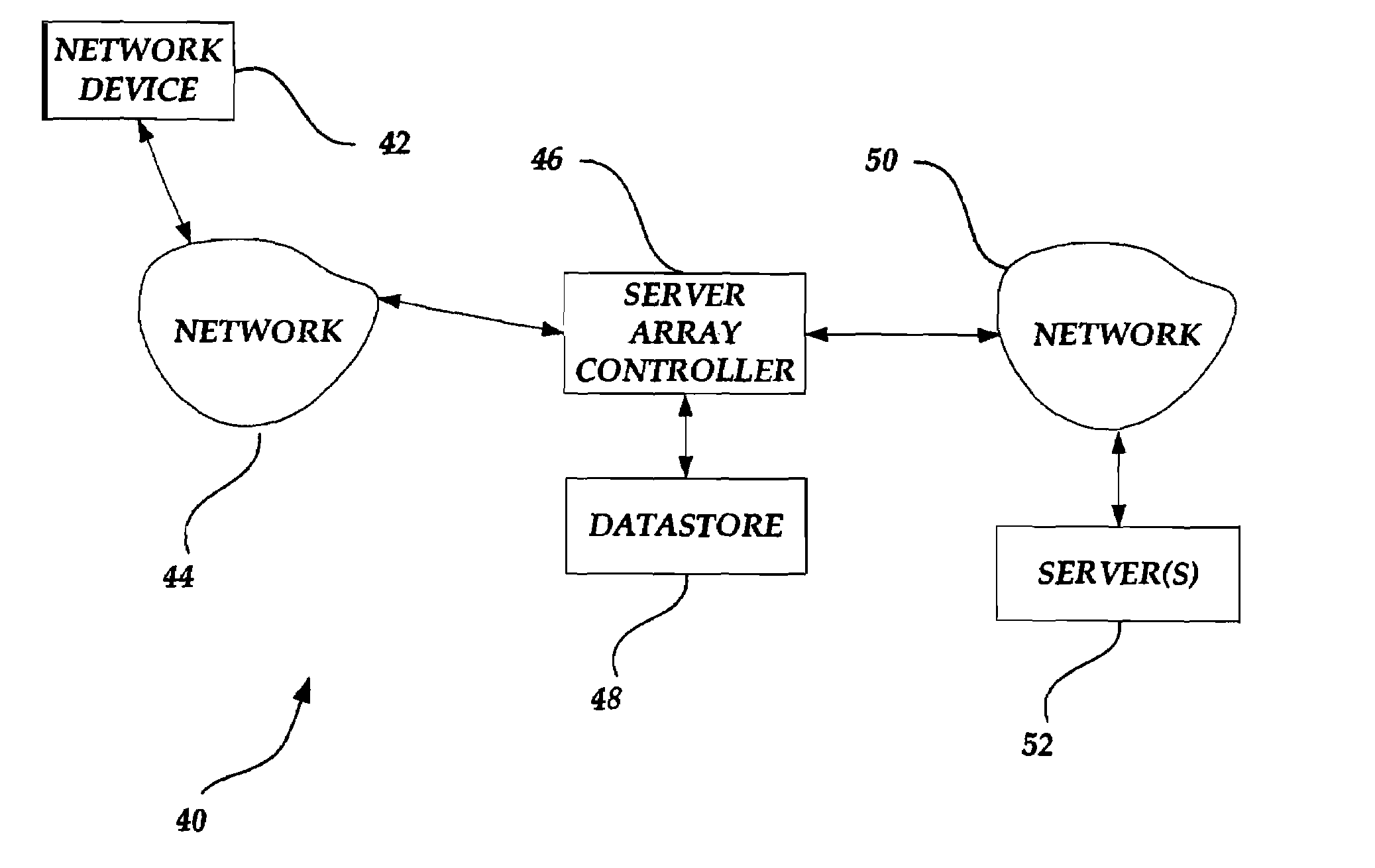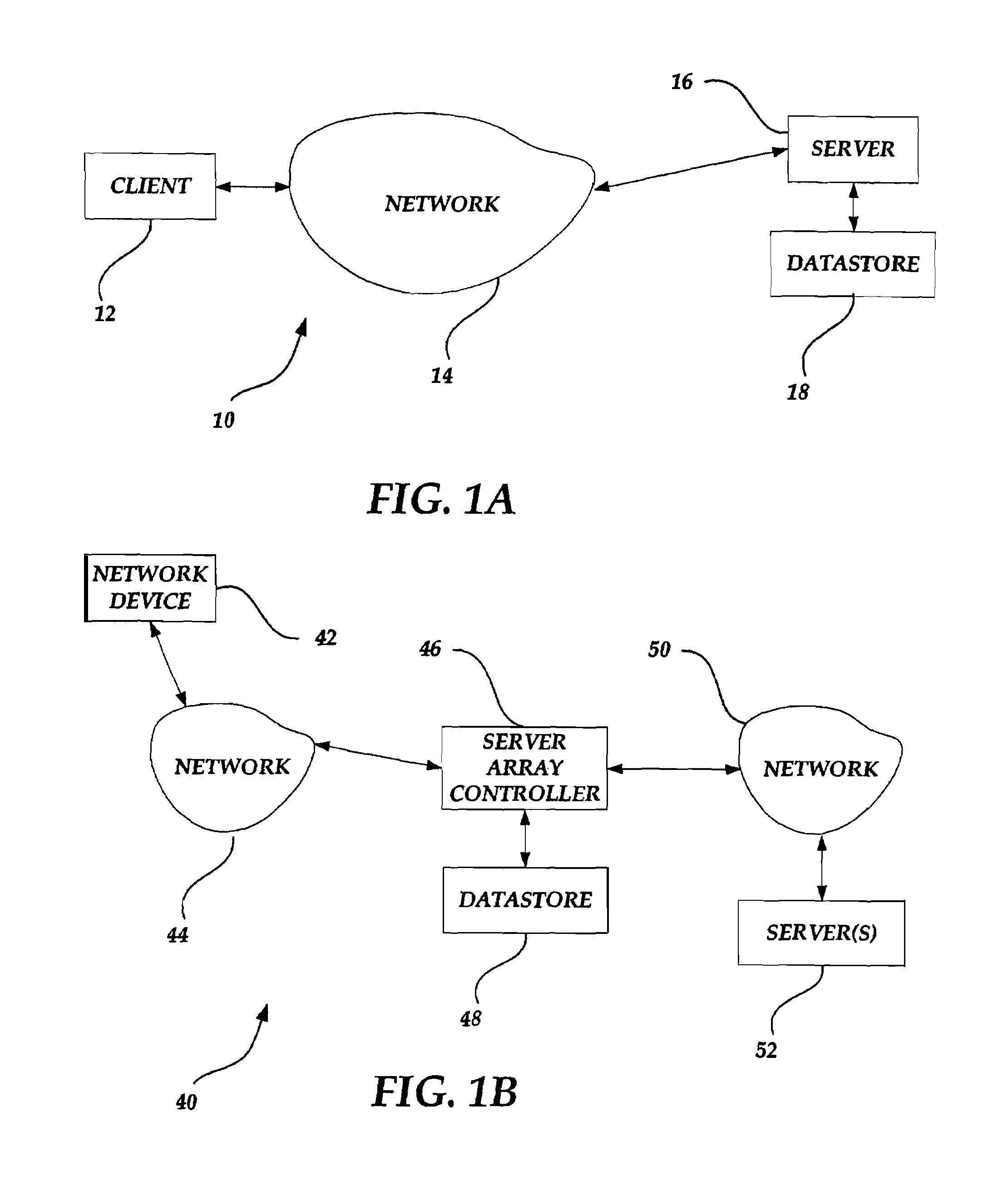Method and system for network load balancing with a compound data structure
a data structure and network load balancing technology, applied in the field of database system methods for implementing different types of data structures, can solve the problems of not always being the optimal data structure for retrieving individual and/or several non-sequential or unrelated data objects from a large set of data objects
- Summary
- Abstract
- Description
- Claims
- Application Information
AI Technical Summary
Benefits of technology
Problems solved by technology
Method used
Image
Examples
Embodiment Construction
[0032]An embodiment of the invention provides for employing a complex data structure to optimize the retrieval of data from a data store over a network. The complex data structure may include multiple data structures, e.g., List and Trie, which in parallel separately reference the same data objects in a data store. For a particular functional request to retrieve data, the complex data structure examines the request to determine whether it is associated the List or Trie data structures. In most cases, the Trie data structure is associated with a functional request for a single data object and the List data structure is associated with functional request to retrieve several related data objects.
[0033]Each data object is associated with a parent object that includes a list of every reference to the data object in both the Trie and List data structures. When a data object is subsequently deleted, the complex data structure employs the parent object list to automatically delete every ref...
PUM
 Login to View More
Login to View More Abstract
Description
Claims
Application Information
 Login to View More
Login to View More - R&D
- Intellectual Property
- Life Sciences
- Materials
- Tech Scout
- Unparalleled Data Quality
- Higher Quality Content
- 60% Fewer Hallucinations
Browse by: Latest US Patents, China's latest patents, Technical Efficacy Thesaurus, Application Domain, Technology Topic, Popular Technical Reports.
© 2025 PatSnap. All rights reserved.Legal|Privacy policy|Modern Slavery Act Transparency Statement|Sitemap|About US| Contact US: help@patsnap.com



